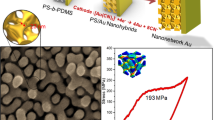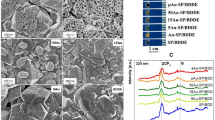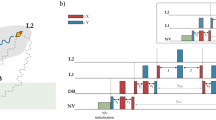Abstract
A novel bio-sensing platform is introduced by combination of a) geometrically controlled DNA bonding using vertically aligned diamond nano-wires and b) the superior electrochemical sensing properties of diamond as transducer material. Ultra-hard vertically aligned diamond nanowires are electrochemically modified to bond phenyl linker-molecules to their tips which provide mesospacing for DNA molecules on the transducer. The nano-wires are generated by reactive ion etching of metallically boron doped atomically smooth single crystalline CVD diamond. Surface properties are characterized by atomic force, scanning electron and scanning tunneling microcopy. Electro- and biochemical sensor properties are investigated using cyclic and differential pulse voltammetry as well as impedance spectroscopy with Fe(CN)63-/4- as redox mediators which reveal sensitivities of 2 pM on 3 mm2 sensor areas and superior DNA bonding stability over 30 hybridization/denaturation cycles. The fabrication of "all diamond" ultra-micro-electrode (UME) arrays and multi-gene sensors are discussed taking into account the unique properties of diamond.
Similar content being viewed by others
Article PDF
Author information
Authors and Affiliations
Corresponding author
Rights and permissions
About this article
Cite this article
Yang, N., Uetsuka, H., Yu, J. et al. Diamond nanowires, a new approach towards next generation electrochemical gene sensor platforms. Nat Prec (2008). https://doi.org/10.1038/npre.2008.1714.1
Received:
Accepted:
Published:
DOI: https://doi.org/10.1038/npre.2008.1714.1



